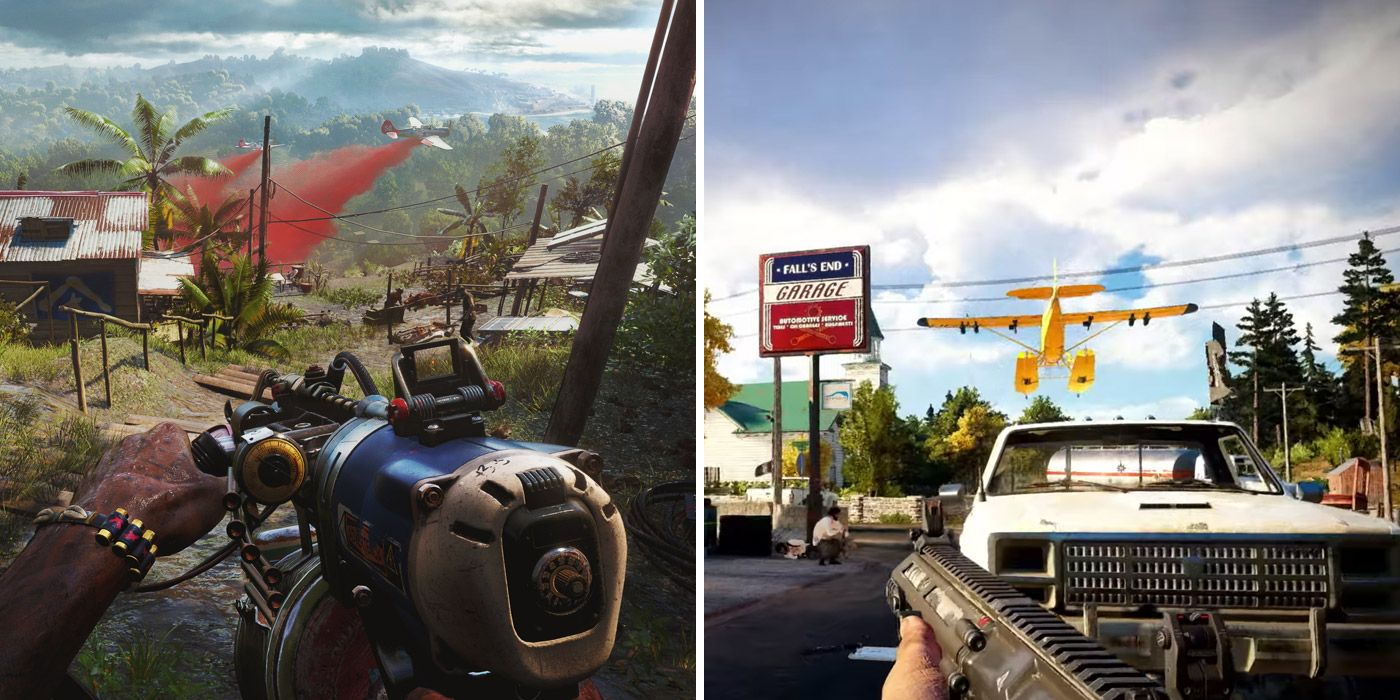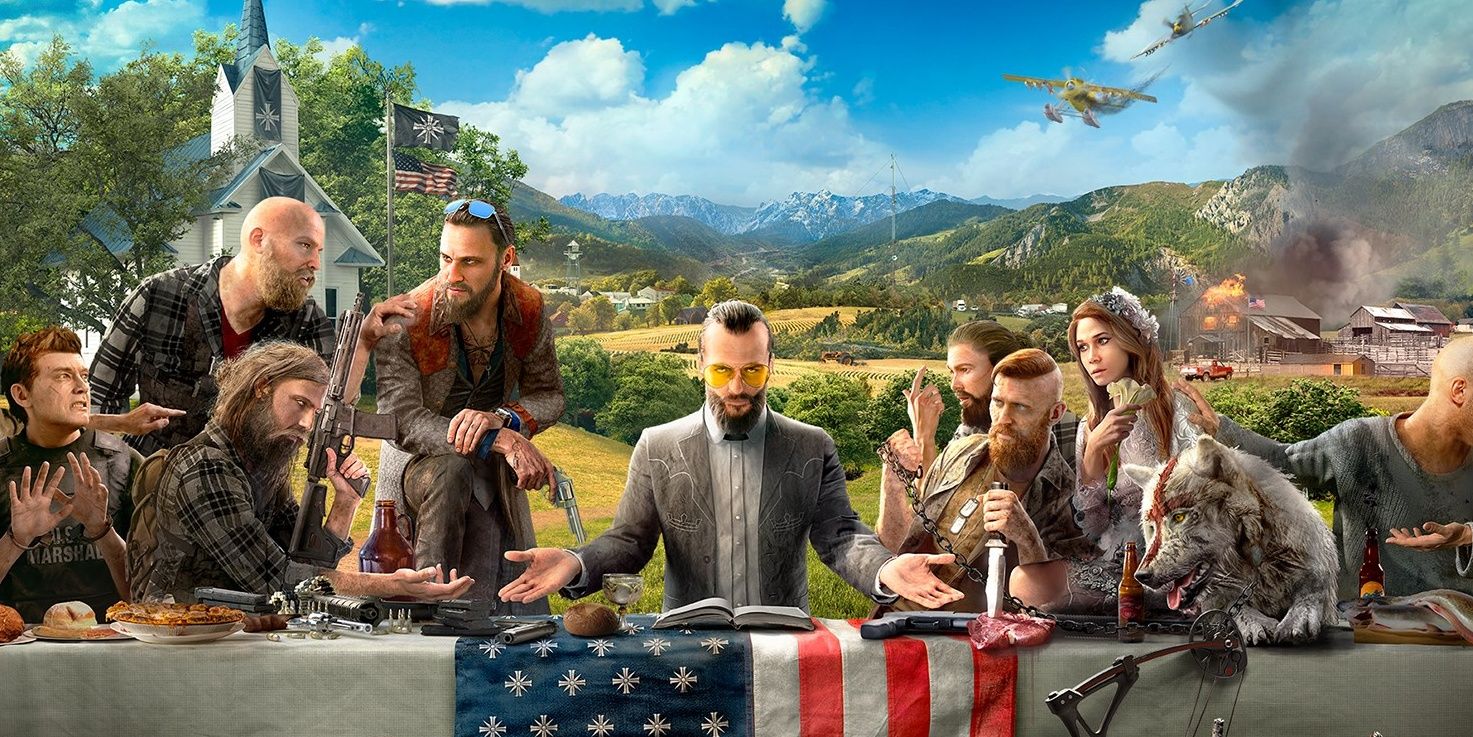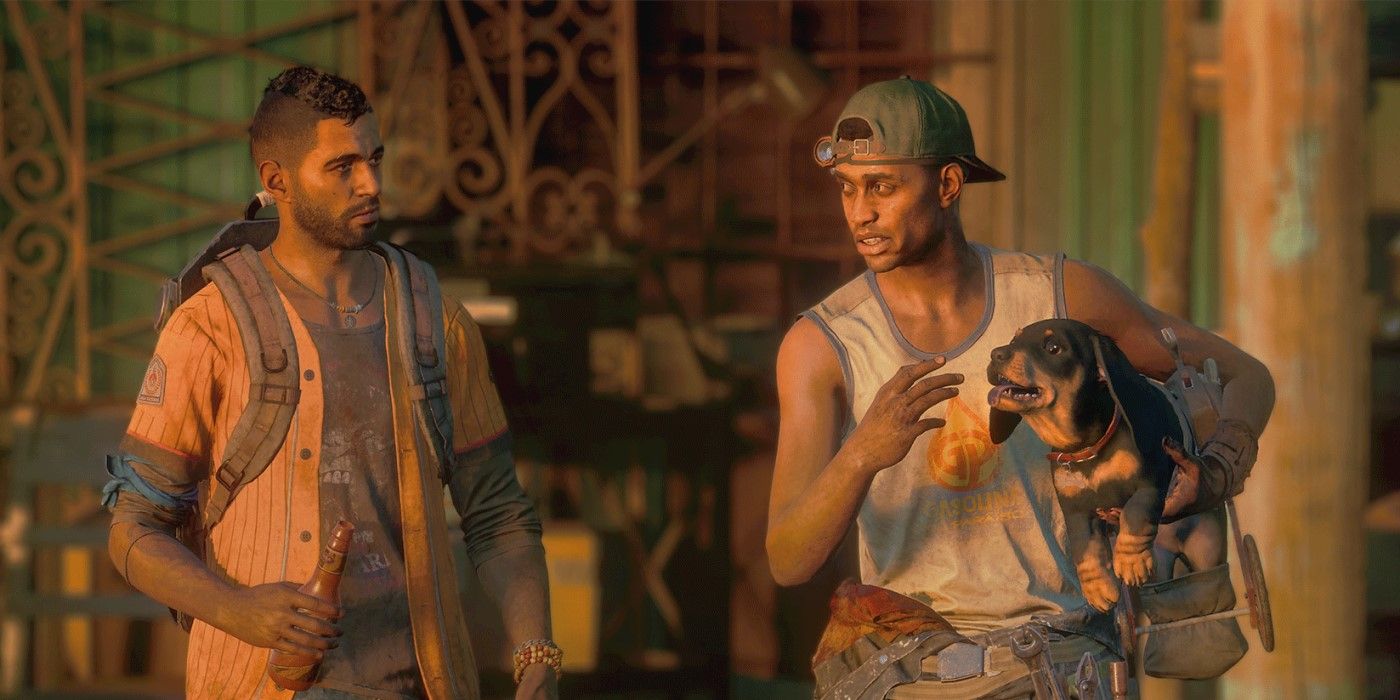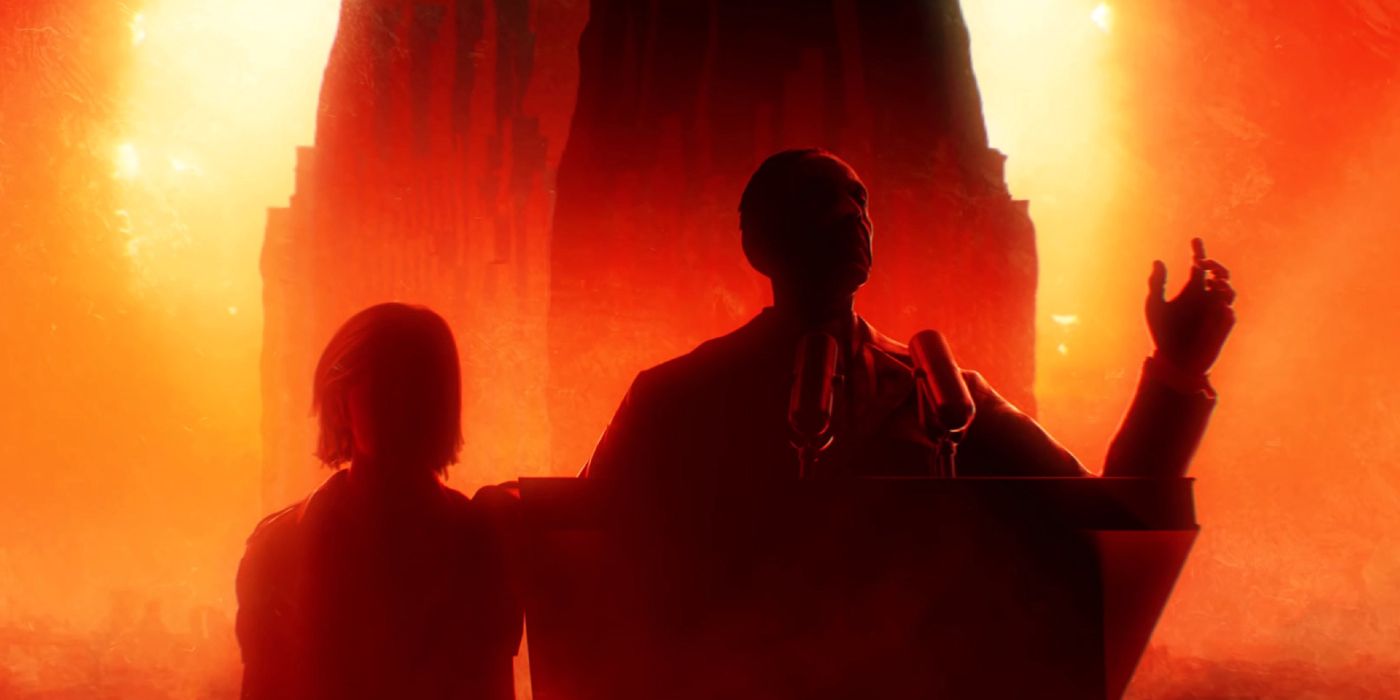Far Cry is a franchise all about iconic villains, chilling but unique atmosphere, and its overarching themes of "insanity." At least it has been since Far Cry 3 and arguably earlier, but Far Cry 5 seemed to ignore much of the atmospheric elements of past games. The fifth entry has all the staples of a proper Far Cry game, and yet, the gameplay experience is far more stereotypical and silly compared to past Far Cry games. The villain's screen time is split into thirds among his three "apostles" sub-villains, and the game never really takes its narrative or atmosphere seriously. Far Cry 6 wants to change that, and everything shown of the sixth entry so far seemingly proves that.
Leaving Hope County and the Seed family behind, Far Cry 6 brings the series to a revolutionary setting in the fictional country of Yara. Players take on the role of a citizen of this Caribbean nation who's engulfed in the political revolution, taking the fight to Anton Castillo's dictatorship. Both Far Cry 5 and Far Cry 6 are tackling themes of resistance and uprising, but in completely different manners. Whereas Far Cry 5's narrative never really takes itself seriously and prioritizes gameplay, the impression of Far Cry 6 (so far) is that the next entry is placing an even greater emphasis on the game's world and story.
Far Cry 5's Atmosphere Was Far Different Than Previous Entries
Back when Far Cry 5 was first teased, it was a chilling first glimpse. Several short teasers of Montana landscapes, bookended by some jarring incident, whether it was a body floating in the river or someone getting slammed into a church bell. It's the kind of atmospheric insanity that previous Far Cry games were all about, and also (no pun intended) hammered home the game's American cultist setting aptly. Then the game was officially unveiled and it was almost like the polar opposite: monster trucks with American flags, absurd caricatures of villains, and an overall much more zany and stereotypical atmosphere. Any semblance of nuance in those teasers was lost.
From what Far Cry 6 has revealed so far in interviews and trailers thus far, the two games seem nothing alike. Far Cry 5 did showcase Joseph Seed as its central antagonist, but a majority of the game focuses on the ensemble cast of his "apostles" instead. Joseph Seed's villainy in Far Cry 5 was admirable when he did have screen time, but his brothers and sisters acted as fragmented, lesser versions of the game's true villain. Their motivations were questionable at best, and nonsensical at worst. If anything, players just wanted to defeat these villains because they were annoying, not compelling. Far Cry 6 is clearly taking a different approach this time around.
Taking a More Grounded Approach in Far Cry 6
It's clear Far Cry 6 is taking a similar approach to previous entries, more akin to Far Cry 3 or Far Cry 4's narrative and world. The game still places a singular tyrant at the core of the game's story, but from everything shown of the game's world thus far, it runs parallel with the game's villain instead of against them. Far Cry 5's world and gameplay did everything in its power to not take the game's story seriously. With Giancarlo Esposito playing the role of the game's villain, it's clear Far Cry 6 is going for a much more serious tale of resistance compared to Far Cry 5. The supporting characters in the story mostly seem to echo that same seriousness as well.
For one thing, the main character Dani Rojas is a fully-performed protagonist in Far Cry 6. Dani Rojas is a reluctant revolutionary who grew up in Yara, and will presumably be thrust into the game's conflict. Aside from maybe Far Cry 4's Ajay, Dani probably has the most interesting background compared to any other Far Cry protagonist before them. Dani's voice and motivations will be a welcome return for Far Cry fans, especially since Far Cry 5's silent protagonist made the game's story far less impactful compared to previous titles. Even if Far Cry 3's Jason was the least interesting video game protagonist, his presence alone made Vaas' villainy much more impactful. Dani is less of a "fish out of water" protagonist compared to previous games, which makes their presence far more interesting in the game's story.
Far Cry 6 Already Has a More Interesting Narrative Hook
Far Cry 6 also adds a human element to Anton's villainy, which could make or break the game's narrative. Anton's son, Diego, adds an element of vulnerability and character motivation for the antagonist. So long as Diego's character arc doesn't feel insignificant compared to Far Cry 6's overarching narrative, Anton's son poses an interesting opportunity for Far Cry 6's narrative. Far Cry 5 had Joseph Seed's brothers and sisters as his allies, but their subsequent defeats at the hands of the protagonist don't even seem to phase him, at least not tangibly. Diego represents a chance to capitalize on a very human aspect of Anton Castillo, a chance that's hopefully not wasted.
At least for now, Far Cry 6 seems to be battling all of the issues that plagued Far Cry 5's story. Pair all of the aforementioned benefits with the game's revolutionary setting in the Caribbean "Yara," and already the game has a more interesting hook. Going for a Cuban Revolution-inspired atmosphere pairs with the Far Cry franchise framework quite well, and Giancarlo Esposito's casting as the villain is only going to make the story more compelling. Again, no shame to the villain's portrayal in Far Cry 5, but the writing and character design for the Seed family never reached the highs of Far Cry 3 and 4. Hopefully Far Cry 6 can achieve similar narrative heights.
Far Cry 6 is in development.




